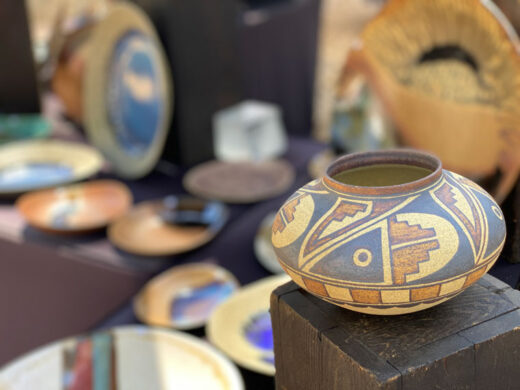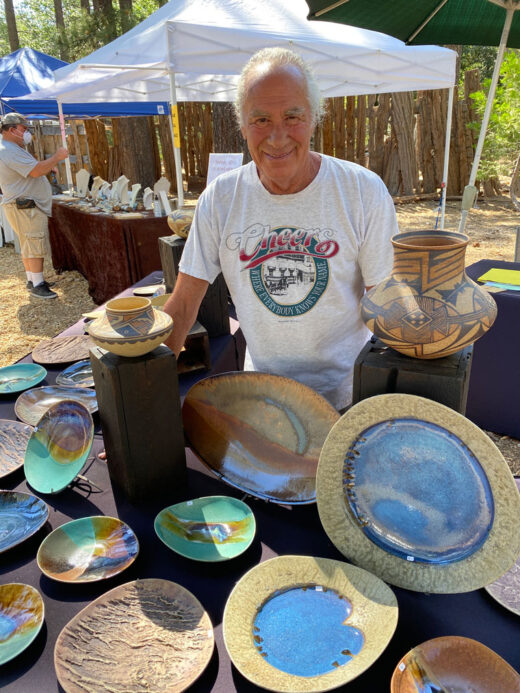
Photo by Jenny Kirchner
Local resident David Salk has called our mountain community home for 50 years, having moved here in the fall of 1970. In that time, his one-of-a-kind pieces of art have graced the tables and cabinets in people’s homes all over the country.
Salk has been working with clay since his early years. He attended Laguna College of Art and Design and University of California, Irvine before he moved to Idyllwild. When he moved here, he was taking ceramics at ISOMATA, now known as Idyllwild Arts Academy.
“You need tools, cutting wire, and a needle,” Salk said. “You use tools when your hands can’t do it. So much of what I’ve learned is from practical experience. I was content to do this without knowing it would become a vocation.”
In his ceramic’s career, Salk thinks he’s used about 100,000 pounds of clay. It doesn’t necessarily mean all 100,000 pounds have become works of art, but that’s still a lot of clay to work with.

Salk has been creating what he calls “clay baskets” for four decades. He wanted to challenge himself in the clay world while honoring the woven basket designs created by Native American during the 1800s.
“I’ve always felt clay in its own right is beautiful without using any glaze,” Salk explained. “It’s clay when I make it — and when I fire it — it becomes stone. It’s like a permanent record of what’s becoming a lost art.” The designs are recreated using iron oxide, then once fired, it preserves these designs for generations.
As far as Salk knows, he is the only potter to create clay baskets in the way he does. Painting with iron oxide and not using any glaze is his unique style.
“I don’t think there will be Native baskets around in 2,000 years,” Salk said. “They are all going to disintegrate and that beautiful art is lost. With these, you can’t get rid of them. They’ll be around well over 2,000 years from now. They are in more than 50 countries already, so they are here to stay.”
Over the years, David has created a unique style of both functional and decorative pottery. People admire the unusual glazing and free-form design. It allows for Salk’s pottery to be functional for all different types of food serving, or just as beautiful being on display.
“The free-form plates are so great to use for serving anything, and I loved getting away from circles,” Salk said. “It was so much fun for me not to stare at another circle. There are confinements, as opposed to looking at a shape.”
When I asked Salk what it was about ceramics that he likes so much he responded, “It’s so tactile to me and it’s clean. You can make a mess with it, but it comes right off. I feel so fortunate to be able to make something that people want and love.”
When he’s not traveling, Salk spends much of his artistic time in his in-home studio in Pine Cove, throwing clay and continuing to blur the artistic lines of ceramics.










